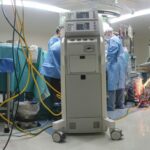Transforming Rare Disease Care: The Future of Gene Editing Therapies


Photo by MJH SHIKDER on Unsplash
Introduction
Gene editing technologies are revolutionizing the landscape of rare disease treatment. With tools such as CRISPR-Cas9, base editing, and prime editing, researchers can now target the root causes of genetic disorders, offering hope for conditions once thought untreatable. As these technologies move from the lab to clinical trials, patients, families, and clinicians are witnessing the dawn of a new era in personalized medicine. This article explores the current state, recent breakthroughs, actionable guidance for accessing emerging therapies, and the challenges and opportunities that shape the future of gene editing in rare diseases.
The Current State of Gene Editing for Rare Diseases
Rare diseases, often caused by single-gene mutations, affect millions worldwide but have historically lacked effective treatments. Traditional therapies have focused on managing symptoms rather than addressing the underlying genetic defects. In recent years, gene editing has emerged as a promising solution, with the CRISPR-Cas9 system at the forefront. This technology allows scientists to precisely modify DNA sequences, potentially correcting disease-causing mutations at their source.
As of mid-2025, only a small fraction of rare diseases have approved gene therapies, and even fewer have approved gene editing treatments. The FDA has so far approved a gene editing therapy for sickle cell disease, marking a significant milestone. Most clinical trials remain in early phases, but momentum is building as new cases and technologies demonstrate safety and efficacy [1] .
Breakthroughs: Personalized and On-Demand Gene Editing
Recent years have seen remarkable breakthroughs in the application of gene editing for rare diseases. In one landmark case, an infant with a severe metabolic disorder received a personalized CRISPR therapy developed and delivered in just six months – a process that historically took years. The child tolerated the treatment well, with early signs of clinical improvement and no serious side effects [4] . This success demonstrates the potential for fast, individualized therapies, especially for ultra-rare or unique mutations (“N-of-1” diseases).
Another prominent example involves a child treated at Children’s Hospital of Philadelphia using customized CRISPR gene editing. The approach not only targeted the patient’s specific mutation but also provided a template for accelerating similar treatments for other rare diseases. The patient’s early improvements in metabolic stability and reduced medication needs have inspired hope for broader application [3] .
How Gene Editing Therapies Work
Gene editing therapies typically involve the following steps:
- Genetic Diagnosis: Precise identification of the mutation responsible for the disease.
- Therapy Design: Developing a gene editing system (CRISPR, base editing, or prime editing) tailored to the patient’s genetic variant.
- Delivery: Administering the therapy to the patient, often using viral or non-viral vectors to deliver the editing tools to target cells.
- Monitoring: Regular follow-up to assess efficacy, safety, and any potential side effects.
New technologies like prime editing and base editing offer more precise and potentially safer edits, reducing the risk of unintended genetic changes. These methods are being tested in clinical trials for conditions such as Severe Combined Immunodeficiency (X-SCID) and Chronic Granulomatous Disease (CGD) [5] .
Accessing Gene Editing Therapies: Steps and Guidance
For patients and families interested in gene editing therapies for rare diseases, here are key steps to consider:
- Obtain a Confirmed Genetic Diagnosis: Accurate diagnosis is essential. You can request genetic testing through your primary care provider or a genetic counselor. Many major hospitals and academic centers offer genetic testing services. Insurance coverage may vary, so it’s advisable to check with your provider.
-
Connect with Specialist Centers:
Leading research hospitals and academic medical centers often run clinical trials for gene editing therapies. You can search for ongoing trials using resources like
ClinicalTrials.gov
, a database maintained by the U.S. National Institutes of Health. Use search terms such as “gene editing,” “CRISPR,” and the specific disease name. - Seek Genetic Counseling: Genetic counselors can help you understand test results, eligibility for clinical trials, and potential risks and benefits of participation. They can also advise on family planning and support services.
- Stay Informed About Clinical Trials: Clinical trials are rapidly evolving. Many patient advocacy groups, such as the National Organization for Rare Disorders (NORD), provide updates and guidance on emerging therapies. It’s important to regularly review trial listings, subscribe to research center newsletters, and maintain communication with your healthcare team.
- Consider Expanded Access Programs: For patients who do not qualify for trials, some companies offer expanded access (“compassionate use”) programs, subject to regulatory approval. Ask your treating physician or hospital research office about these options.
Important:
If you are seeking access to gene editing therapy, begin by contacting your primary healthcare provider or a genetics specialist. They can help you navigate options and refer you to relevant research centers or programs. For the most up-to-date information on clinical trials, visit the official
ClinicalTrials.gov
database and search by disease and therapy type. Avoid unofficial sources and consult with your physician before pursuing any investigational treatment.
Promises and Expectations: What the Future Holds
Experts anticipate that gene editing therapies will become the standard of care for many rare diseases within the next decade. In a recent global survey of over 1,400 rare disease researchers, most predicted that gene therapies would be standard practice before 2036 and could cure many rare diseases after that date. CRISPR-Cas9 was identified as the most promising technology, with expectations for long-lasting or potentially permanent effects [2] .
While optimism is high, it is important to recognize that most gene editing therapies remain in development. Regulatory approval, long-term safety, and cost-effectiveness must be established before widespread adoption. Nevertheless, case studies and early trials suggest that a future where rare genetic diseases can be precisely and efficiently treated is within reach.

Photo by digitale.de on Unsplash
Challenges and Limitations
Despite rapid progress, several challenges remain:
- Safety and Efficacy: Many gene editing therapies are in early-stage trials, and long-term outcomes are still unknown. All participants require careful monitoring for potential side effects or unintended genetic changes [3] .
- Cost and Accessibility: These therapies are complex and expensive to develop. As of now, only a few treatments have received regulatory approval and widespread insurance coverage is not guaranteed. Patients should consult their providers and advocacy groups for updates on financial support and access programs.
- Technical Barriers: Delivering gene editing tools safely and efficiently to the right cells remains a technical hurdle, especially for diseases affecting organs less accessible than the liver or blood.
- Ethical and Regulatory Considerations: Each therapy undergoes rigorous review to ensure ethical standards and patient safety. Participation in clinical trials is voluntary and includes informed consent processes.
If you encounter barriers to accessing gene editing therapies, consider contacting major academic medical centers, patient advocacy organizations, and professional genetic counselors. They may provide alternative pathways such as traditional gene therapies, symptomatic management, or information about trials in development.
Alternative Approaches and Future Innovations
While gene editing holds tremendous promise, it is not the only pathway for rare disease treatment. Traditional gene therapies (using viral vectors to add healthy copies of a gene) and small-molecule drugs continue to play a vital role, especially when editing is not feasible. In some cases, a combination of approaches may yield the best outcomes.
Research is ongoing to improve delivery methods, minimize risks, and expand the range of diseases that can be treated. Newer editing tools, such as base and prime editing, are being refined to reduce side effects and increase precision. These innovations are likely to expand the pool of treatable conditions and improve safety profiles [5] .
Summary and Next Steps
Gene editing is poised to transform care for rare diseases, offering hope for targeted, durable, and potentially curative therapies. While access remains limited to clinical trials and select approved therapies, the pace of advancement is accelerating. Patients and families should:
- Seek accurate genetic diagnosis and specialist guidance
- Monitor official clinical trial registries and advocacy organizations
- Discuss options with genetic counselors and healthcare teams
- Explore alternative approaches when gene editing is not available
By staying informed and proactive, affected individuals can position themselves to benefit from the next generation of therapies as they become available. For the most current updates, use the official
ClinicalTrials.gov
registry and consult established medical and advocacy organizations.
References
- UConn Today (2025). World-First Gene Editing Trial for Rare Genetic Disease at UConn Health.
- Braga, LAM et al. (2022). Future of genetic therapies for rare genetic diseases.
- Children’s Hospital of Philadelphia (2025). World’s First Patient Treated with Personalized CRISPR Gene Editing Therapy.
- Innovative Genomics Institute (2025). First Patient Treated with On-Demand CRISPR in Just 6 Months.
- Innovative Genomics Institute (2025). CRISPR Clinical Trials: A 2025 Update.






